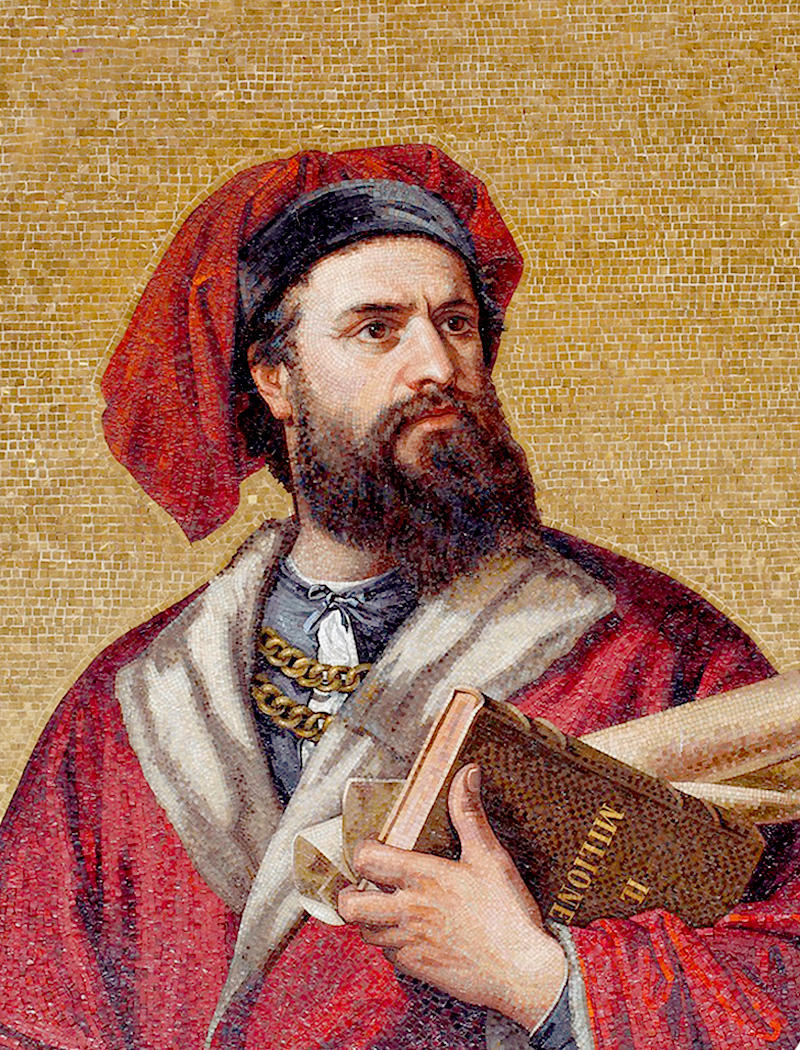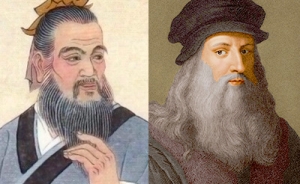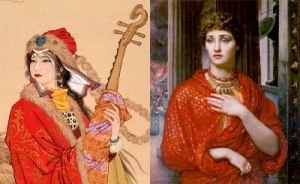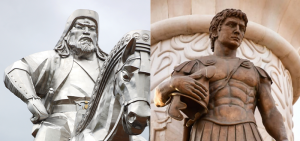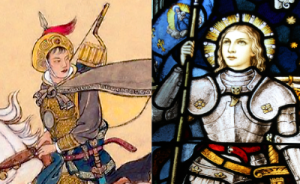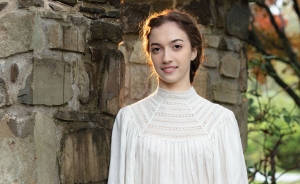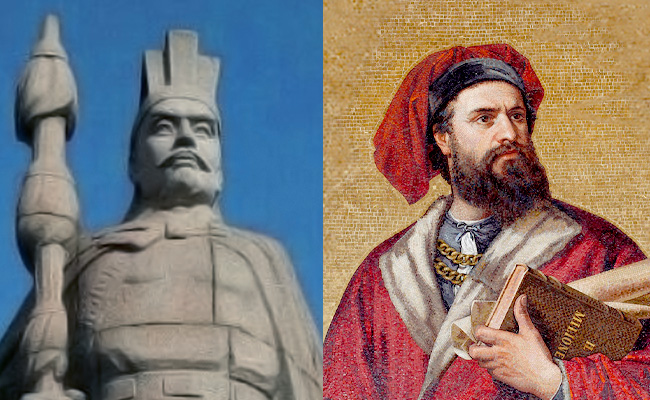
Những Nhân vật Nổi danh 10/10: Marco Polo và Trương Khiên
Trong loạt bài này chúng ta sẽ tìm hiểu các nhân vật lịch sử của Trung Quốc cùng với “phiên bản phương Tây” của họ với sự tương đồng đáng kinh ngạc.
Vào năm 138 TCN, trong một sứ mệnh ngoại giao, một vị quan tên là Trương Khiên đã vượt qua biên giới phía Tây của Trung Quốc. Tuy nhiên, do liên tục gặp sự cố, cuộc hành trình của ông kéo dài tới 25 năm. Trong thời gian này, ông đã đến thăm nhiều vương quốc mà người Trung Quốc chưa biết đến và thu thập được những thông tin chi tiết, có giá trị, giúp mở mang tầm mắt. Các ghi chép của Trương Khiên đã đánh dấu một bước ngoặt trong mối bang giao với các quốc gia phía Tây Trung Quốc. Các chuyến đi của ông được ghi lại rõ ràng trong Sử ký của Tư Mã Thiên.
Đến năm 1271 SCN, một thanh niên người Venice tên là Marco Polo khởi hành cùng người cha thương gia và người chú của mình đến phương Đông. Trong 24 năm sau đó, họ đã khám phá dọc theo Con đường Tơ lụa, khắp Trung Quốc và Đông Nam Á. Sau khi trở lại, Marco đã viết cuốn The Travels of Marco Polo (Marco Polo du ký), cuốn sách giới thiệu cho người châu Âu về sự kỳ thú của phương Đông — kích thích trí tưởng tượng của rất nhiều độc giả.
Trương Khiên
Là một vị quan và nhà ngoại giao của triều đại nhà Hán, Trương Khiên (164-113 TCN) được hoàng đế cử đi thực hiện một hiệp ước liên minh với một bộ tộc du mục lân cận, Đại Nguyệt Chi. Trên đường đi ngang qua một vùng đất không thân thiện, Trương Khiên bị bắt làm tù binh. Ông bị giam cầm trong hơn một thập kỷ.
Không phải là người dễ nhụt chí, ông đã tìm cách xoay sở, cuối cùng ông đã trốn thoát và đến được vùng đất của bộ tộc Đại Nguyệt Chi. Khi ở đó, Trương Khiên phát hiện ra rằng những người Đại Nguyệt Chi không mấy quan tâm đến việc hình thành liên minh. Tuy nhiên, đó không phải là tất cả những gì ông phát hiện ra. Ông ngạc nhiên khi thấy rằng người Đại Nguyệt Chi rất phát triển về mặt nông nghiệp, họ trồng một số loại cây trồng mà người Trung Quốc chưa biết đến, cũng như nuôi những con ngựa tốt.
Từ đó,Trương Khiên phiêu lưu khắp Trung Á, ghi lại những phát hiện và quan sát của mình, sau đó quay trở lại kinh đô của người Hán - theo một tuyến đường khác an toàn hơn.
Ông đã bị bắt một lần nữa.
May mắn thay, lần này chỉ sau hai năm ông gặp một cơ hội trốn thoát hoàn hảo. Sau khi về đến nhà, Trương Khiên đã trình bày sơ lược cho hoàng đế nhà Hán về nhiều vương quốc và quốc gia văn minh và đông dân, nền văn hóa, lối sống, địa lý của họ và tất cả những điều thú vị mà ông đã gặp.
Theo Sử ký của Tư Mã Thiên:
“Hoàng đế đã nghe nói về Đại Uyển, Đại Hạ, An Khê và những nơi khác, đây là những vùng đất rộng lớn có nhiều sản vật khác lạ mà ở đó dân chúng canh tác đất đai và kiếm sống theo cách giống như người Trung Quốc.”
Đáng chú ý là loài ngựa Đại Uyển, chiến binh cưỡi voi, cung thủ thiện nghệ, cỏ linh lăng làm thức ăn gia súc, lạc đà một bướu và rượu nho.
Trương Khiên được biết đến là người đầu tiên cung cấp thông tin chính xác và chi tiết cho người Trung Quốc về Trung Á và các dân tộc ở đó. Những khám phá của ông đã dẫn đến việc mở rộng Con đường Tơ lụa trên khắp Trung Á và mang đến nhiều sứ mệnh hơn nữa.
Marco Polo
Trong suốt những thế kỷ tiếp theo, Con đường Tơ lụa đã có những bước thăng trầm, sau sự sụp đổ của nhà Đường vào thế kỷ thứ 10, nó trở nên khá nguy hiểm và thương mại giảm sút nghiêm trọng. Phải đến thế kỷ 13 Pax Mongolica, Con đường mới thực sự hồi sinh trở lại — đây là thời điểm hoàn hảo để nhân vật tương đồng của chúng ta xuất hiện.
Marco Polo sinh năm 1254 trong một gia đình thương gia ở Venice. Khi còn là một thiếu niên, ông đã cùng cha và bác của mình đến phương Đông để giao thương. Tuy nhiên, ngoài công việc giao thương, ba người họ đã tham gia nhiều hơn thế, và cho đến khi họ đặt chân trở lại châu Âu chuyến đi của họ đã kéo dài 24 năm.
Sau khi khởi hành từ Venice, gia đình Polo đi qua Israel, Thổ Nhĩ Kỳ, Iraq, Iran, Afghanistan và Tajikistan ngày nay; họ băng qua sa mạc Taklamakan và Gobi. Khi đến được kinh đô của nhà Nguyên, họ đã được Hốt Tất Liệt (cháu trai của Thành Cát Tư) chào đón. Hốt Tất Liệt trước đây đã gặp cha và chú của Marco Polo, giờ đây gặp một người trẻ nhất có họ Polo và đã phong cậu làm sứ giả của mình. Sự tin tưởng ban đầu này đã dẫn đến một sự bổ nhiệm dài hạn cho phép Marco Polo khám phá Trung Quốc và Đông Nam Á trong 17 năm bằng hộ chiếu VIP, nhìn thấy những địa điểm và những thứ mà chưa có người phương Tây nào nhìn thấy trước đây.
Trải nghiệm của ông nghe có vẻ đẹp hơn nhiều so với hơn một thập kỷ Trương Khiên bị giam cầm. Tuy nhiên, Marco Polo được Hốt Tất Liệt sủng ái đến mức nhiều năm sau đó, khi ông muốn trở về nhà, những lời cầu xin của ông hết lần này đến lần khác bị từ chối.
Cuối cùng, Marco được phép về nhà. Tuy nhiên, khi trở lại vào năm 1295, ông thấy Venice đang có chiến tranh. Marco trở thành chỉ huy của một con tàu, nhưng cũng giống như nhân vật tương đồng người Trung Quốc của mình, ông nhanh chóng bị bắt làm tù binh. Tuy nhiên, việc phải ngồi tù không hề lãng phí thời gian. Nhà tù là nơi Polo (cùng với một người bạn tù) soạn thảo bản thảo cuốn du ký của mình. “Marco Polo du ký” mô tả địa lý và phong tục văn hóa Châu Á. Polo kể về đồ sứ và thuốc súng, “những viên đá cháy như khúc gỗ” (than đá), một kinh đô lớn với “cung điện vĩ đại nhất từng có” và một nhà ăn có thể chứa 6.000 người, tiền giấy và dịch vụ bưu chính của quốc gia, hệ thống kênh đào rộng lớn , kỹ nghệ sản xuất sắt và muối phi thường, sách bìa mềm và quần áo lụa, cũng như voi, cá sấu và khỉ. Tuy nhiên, cuối cùng, Marco Polo khẳng định: “Tôi mới chỉ kể một nửa những gì tôi đã thấy”.
"Marco Polo du ký" đã mang lại cho người châu Âu cái nhìn toàn diện đầu tiên về Trung Quốc và các quốc gia khác ở châu Á. Cuốn sách trở nên vô cùng nổi tiếng và được coi là một trong bản thuật lại giá trị nhất về thế giới bên ngoài vào thời điểm đó. Người ta nói rằng, hơn một thế kỷ sau, một người đàn ông tên là Christopher Columbus đã mang theo một bản sao của cuốn sách trong chuyến hành trình của mình.
Do vậy, đây là hai người đàn ông - một người đi từ Đông sang Tây và một người từ Tây sang Đông - đã bắt đầu những cuộc hành trình đầy hiểm nguy kéo dài hai thập kỷ rưỡi, và mang về cho quốc gia của họ những kiến thức hấp dẫn về những thế giới ly kỳ mà họ đã thấy. Sống cách nhau một nghìn năm, nhưng theo một góc độ nào đó, con đường của Trương Khiên và Marco Polo đã gặp nhau, đó là khai sáng và truyền cảm hứng của họ trong vai trò sứ giả khám phá những nền văn hóa.
Đây là bài viết thứ 10 và cũng là bài viết cuối cùng trong loạt bài về những nhân vật tương đồng của chúng tôi. Bạn yêu thích nhân vật nào? Có cặp nhân vật tương đồng nào mà bạn nghĩ rằng chúng tôi nên thêm vào loạt bài này? Hãy cho chúng tôi biết trong phần bình luận dưới đây. Ồ, và hãy chờ để nhận quà vào tuần tới.

Những Nhân vật Nổi danh 10/10: Marco Polo và Trương Khiên



